A Project By Radha D’Souza And Jonas Staal
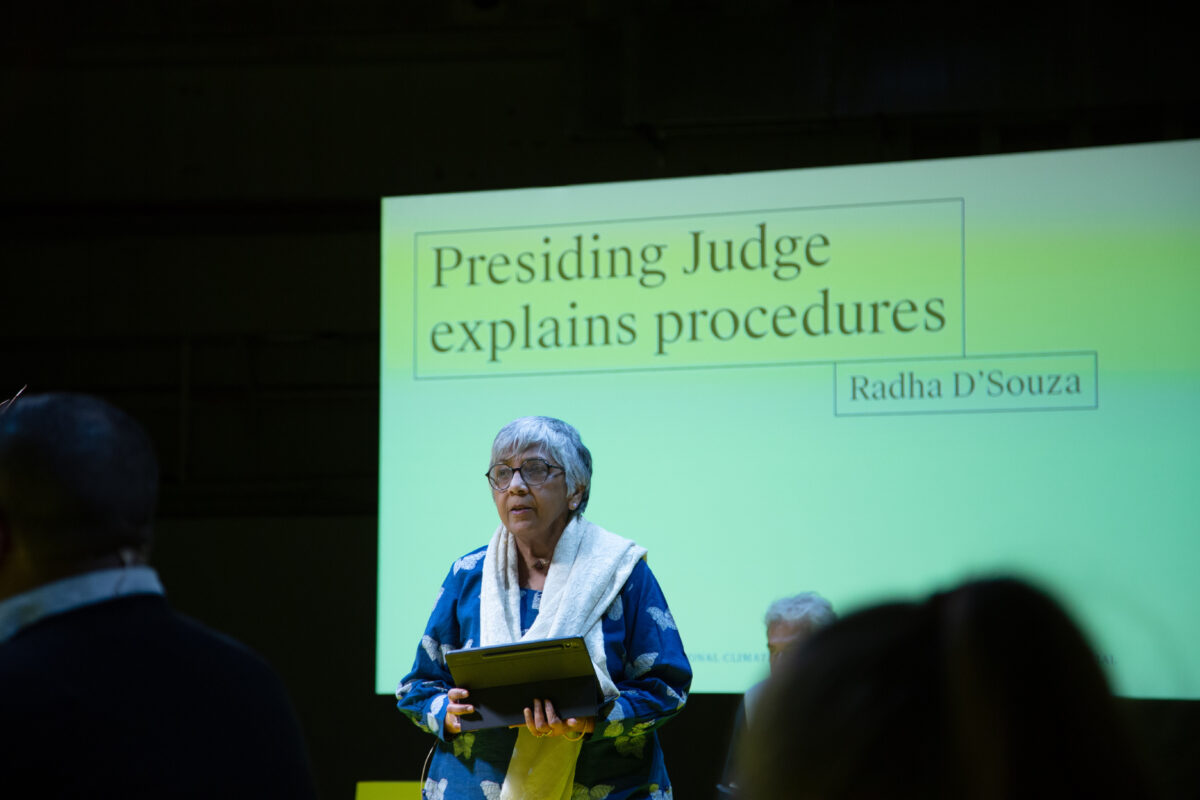
CREAM and the Law, Development and Conflict Research Group collaborated with partners at the Serpentine Gallery, London, and Framer Framed (NL) to fund and support independent research leading up to this edition of the Court for Intergenerational Climate Crimes (CICC): The British East India Company on Trial, which initially took place at Ambika P3, University of Westminster, in April 2025.
With special thanks to CREAM’s Ecological Futurisms initiative led by; Matthias Kispert, Roshini Kempadoo and Neal White, as well as Harry Smith (Kew Herbarium – home to the Nathaniel Wallich / British East India Company Herbarium Catalogue). Thanks to the research assistants sponsored by Westminster to work with the Serpentine; Daniel Voskoboynik and Muhammed Ahmedullah, as well as our cohort of CREAM PhD CICC Correspondents and, of course, those who attended and gave their time as Witnesses, Judges and members of the Public Jury.
We are delighted to announce that this version of the CICC, The British East India Company on Trial as supported by CREAM is now on tour and will be exhibited at the following venues (will be updated):
IMMA – Irish Museum of Modern Art, Dublin, Ireland. 12 September 2025 – 14 September 2025
Blenheim Walk Gallery, Leeds Arts University, Leeds, UK. 31 October 2025 – 31 January 2026
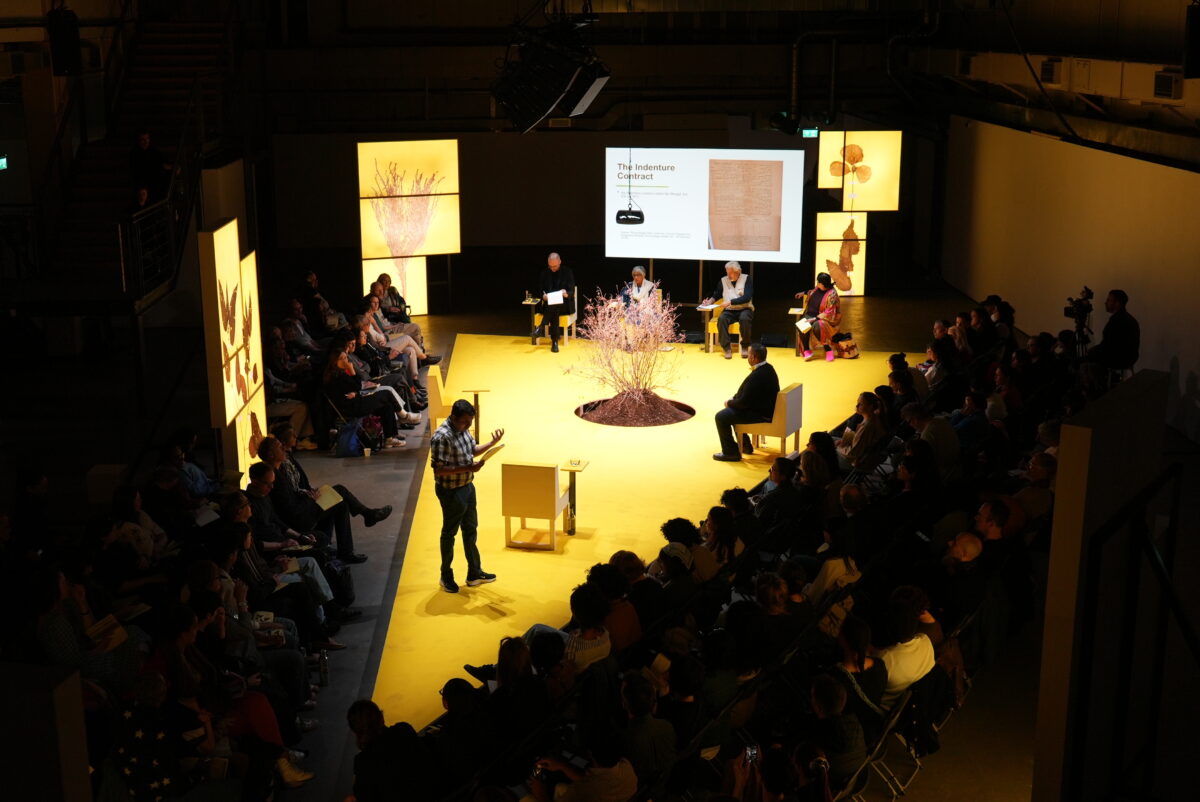
Court for Intergenerational Climate Crimes: The British East India Company on Trial: A Response.
Mathias Kispert.
Living close to the City of London, which has for centuries operated as one of the central hubs for global financial capital, I often cycle through Leadenhall Street, where East India House, the former headquarters of the East India Company (EIC), used to stand. Now the same site houses the Lloyd’s building, one of London’s architectural landmarks known for having done away with its façade and instead exposing the infrastructural workings that service the building – staircases, lifts, ventilation shafts and the like – to the view of passersby, in perhaps the most widely known example of the architectural style of Bowellism. As one might have guessed, this is the home of the insurance company Lloyd’s of London. And while the building itself thrusts its innards squarely into the view of anyone in the vicinity, it operates on vast amounts of wealth and power that happen every day in the bowels of this district that are of course far less accessible to public scrutiny, and this is as true now as it was during the almost 300 years of the East India Company’s existence.
Uncovering some of these operations and exposing their deep and protracted socio-ecological reverberations in the context of the East India Company was one of the central themes of the London iteration of the Court for Intergenerational Climate Crimes (CICC): The East India Company on Trial, which took place at Ambika P3 from 4–24 April, in a collaboration between CREAM and the Law, Development and Conflict Research Group at the University of Westminster, and the Serpentine. Inaugurated in 2021, the CICC is a project by activist, legal scholar and CREAM associate Radha D’Souza and artist Jonas Staal, who is known for large-scale installations that function as gathering spaces for activist and political movements, as well as work on propaganda.
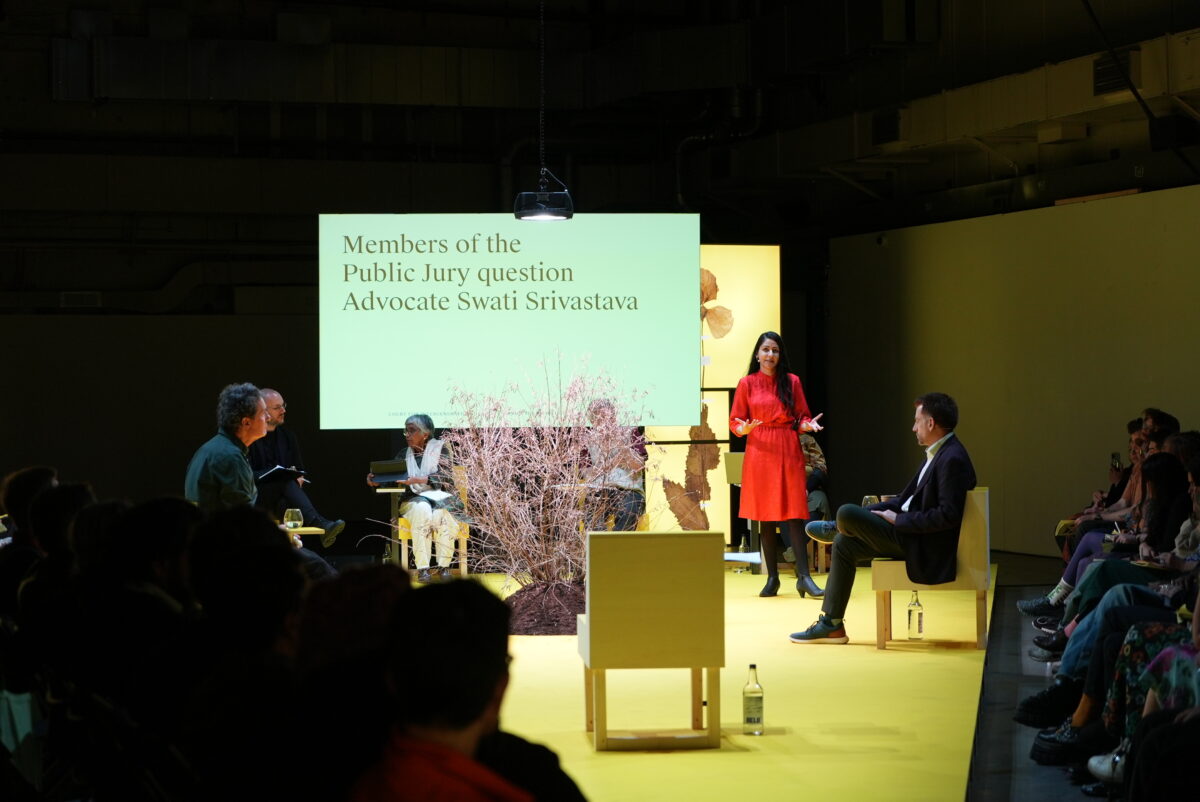
As Radha D’Souza (2025) says in an interview with Pedro Urano (2025):
In the London trial, the focus was on intergenerational crimes—specifically, how harms committed four or five centuries ago perpetuate across generations. While we might broadly attribute this to colonialism, the critical question was: how does this transmission occur? Today, we label it neocolonialism, but what mechanisms sustain it? And crucially, how does it persist despite centuries of resistance, rebellion and relentless contestation? This was the heart of our examination.
As D’Souza continues, the East India Company is
where all this entanglement of corporate and state power started. The East India Company created the systems of corporate governance, the way corporations and governments work together, setting up this relationship between private companies and the British Crown.
The lingering presence of the EIC in London’s urban fabric is, on the one hand, just about as ostentatious as the exhibitionism of Bowellist architecture, while on the other hand, it is just as easily ignored in the daily humdrum of urban life. Take the names of pubs that I regularly pass by, for example: there is the obvious East India Arms, and beyond that also the Duke of Wellington, who used to fight battles for the Company – which operated a military owned by shareholders and controlled by a corporate board – or the Marquis of Cornwallis, who succeeded Warren Hastings as governor-general of India after being forced to capitulate to Britain’s American colonialists in the American War of Independence.
The court has been sitting twice before: the project was inaugurated at Framer Framed in Amsterdam in 2021 and the second session held at the Gwangju Biennale in 2023, with additional manifestations of the project in Dublin, Münster, Helsinki and Seoul. A central point of departure for the CICC is D’Souza’s (2018) book What’s wrong with rights? Social movements, law and liberal imaginations, which puts forward a critique of the notion of rights inherited from liberal political philosophy in the context of social movement work. In order to establish a legal framework for the CICC while at the same time putting forward a notion of law based on intergenerational and multi-species justice, D’Souza and Staal (2021) published the Intergenerational Climate Crimes Act, on which the court’s proceedings are based.
As the exhibition booklet states, the CICC
stages public hearings in immersive installations functioning as a court, to prosecute intergenerational climate crimes committed by states and corporations acting together. These hearings address crimes of the past, present and future, reflecting the intergenerational impacts of climate crimes on ecologies and communities. (Serpentine 2025: 4)
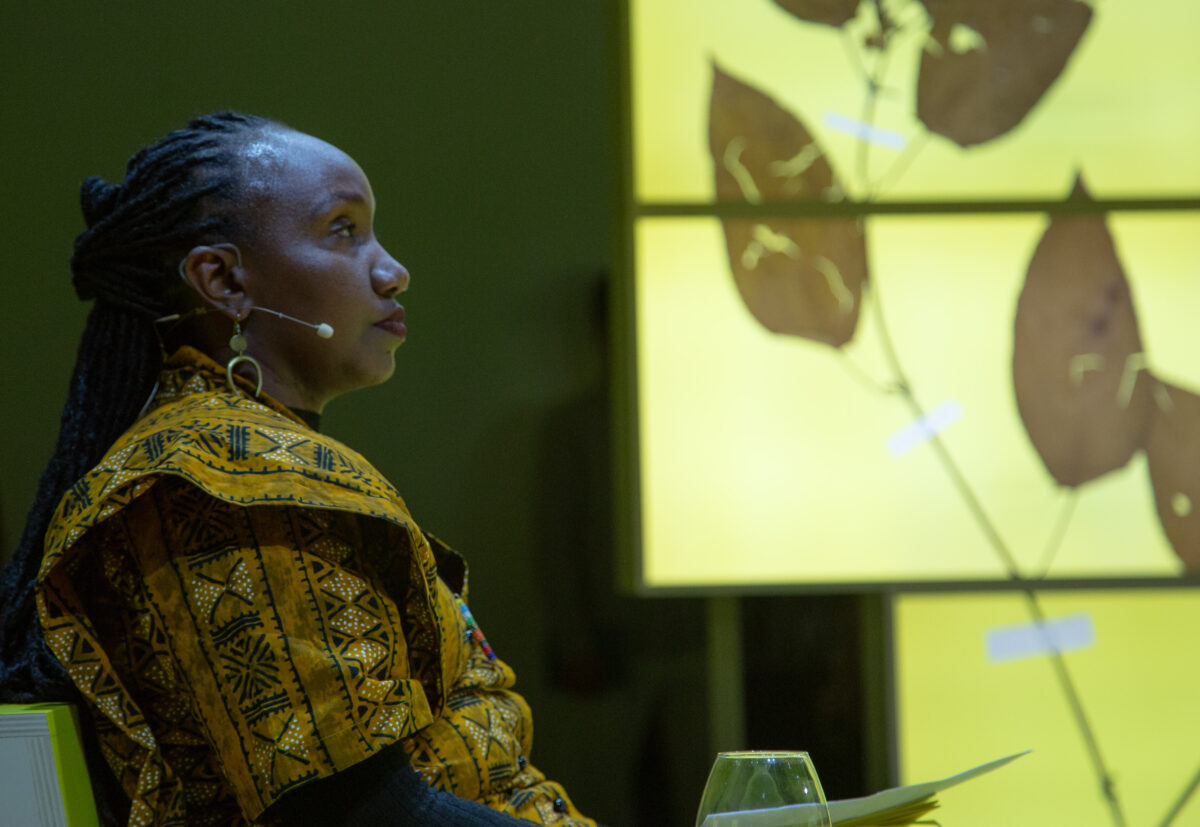
In the London iteration, visitors entered the darkened space of Ambika P3, where the centre of the hall was filled by an elongated triangular stage covered in yellow felt, whose proportions were modelled on the wedge in El Lissitzky’s 1919 poster Beat the Whites With the Red Wedge. This functioned as the setting for court proceedings. In the centre of this stage, a round hole had been cut, which had been filled with a mound of soil in which an indigo plant – comrade indigo– lived for the duration of the project, growing leaves and popping seeds into its surroundings as court proceedings progressed. Facing the shorter side of the wedge stood a floor-mounted screen for video projections, while on both its long edges were rows of seats for the attendees of the event. On the outer perimeter of this space stood five large light boxes, each of which displayed a highly detailed photograph of samples of colonial cash crops. Taken from the dried remains of the actual plants from the British East India Company collection that botanist Nathaniel Wallich published as a catalogue and held in the archive of Royal Botanical Gardens at Kew in London, the scientific specimens – indigo, cotton, jute, opium and sugarcane – became critical to the epistemic violence through which EIC prosecuted its growth through plantations and related trade.
The CICC brought three cases over two days in early April, each of which followed a a similar trajectory: after opening remarks by Presiding Judge Radha D’Souza, two Witnesses were called to testify, followed by a statement by the Advocate for the Court. The testimony of the first Witness detailed historical crimes of the EIC against people and ecologies, while the second Witness presented evidence that demonstrated how the injustices and forms of exploitation inaugurated by the EIC during colonial times are being carried forward in the contemporary moment. The role of the Advocate was to synthesise the statements of both Witnesses and highlight historical continuities. Following their presentation to the court, each Witness and Advocate was questioned by the Judges: Radha D’Souza, legal scholar and Indigenous rights activist Sharon H. Venne and editor Ramón Vera-Herrera. After this, the floor was open to questions from the Public Jury – as D’Souza reminded the assembled crowd at the outset of each trial, the task for those in attendance went beyond passively observing the proceedings; everyone was called upon to participate in the court’s work as a member of the Public Jury. Finally, after the respective Witnesses and Advocate had testified and responded to questions, the court’s Clerk Jonas Staal read out a number of judgements to be voted on by the Public Jury.
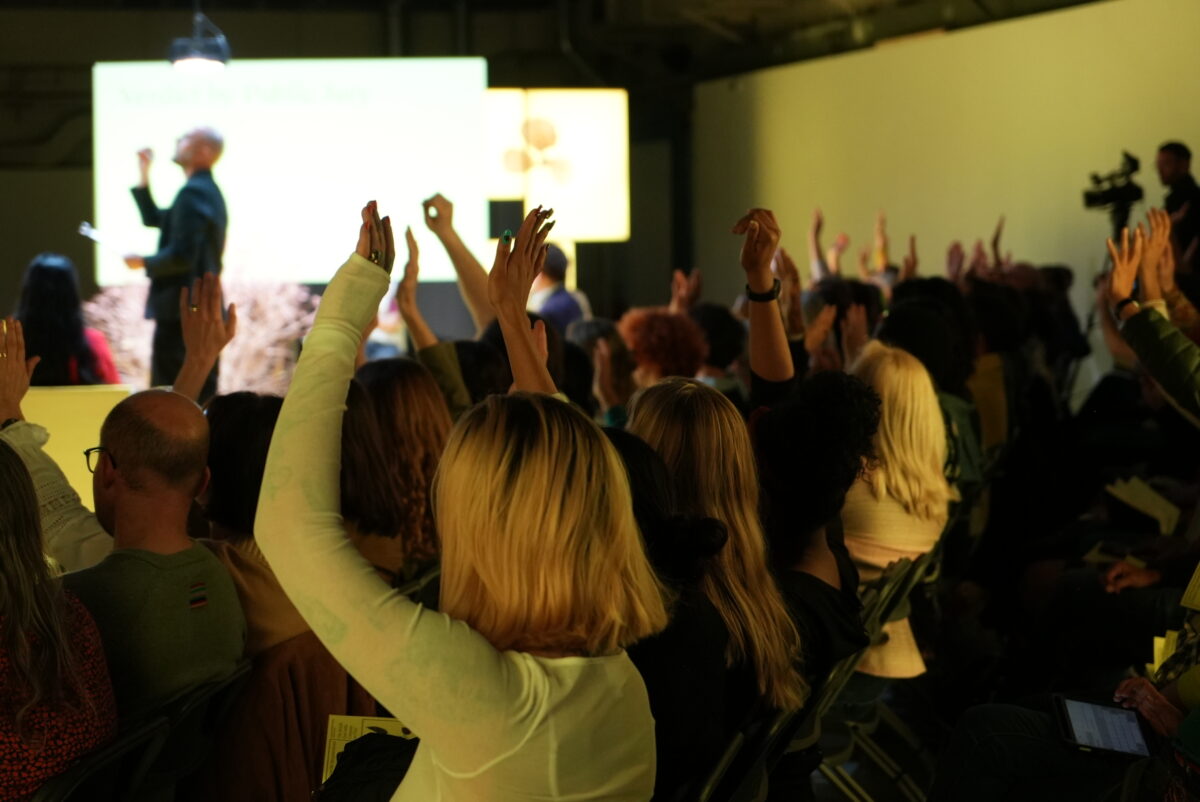
What this meant is that during the court’s proceedings, the CICC operated as a space of communal deliberation, collective learning and prefigurative politics, Ultimately, the CICC address the workings of the law itself. As D’Souza and Staal explained in a presentation to a group of University of Westminster PhD candidates documenting various aspects of the project, the CICC puts forward a notion of law as performative in several aspects. For one, there are all the ways in which the institution of the law stages itself: its architectural spaces, ceremonial robes, linguistic conventions, procedural mannerisms and the like. At the same time, since the law is dependent on being continuously enacted, it is also performative in the sense put forward by Judith Butler (1999/1990) in relation to gender, according to which ostensibly immutable social structures and conventions are in fact dependent on being reenacted day by day, and thus changeable. It is in this sense that the CICC puts the law as it exists on trial and in the process enacts a different, more equitable, intergenerational and multi-species notion of law every time it opens for proceedings – not just as a proposition, but as a practice.
In the London iteration, Case I investigated the East India Company and the British Crown as ‘partners in crime against ecologies and communities’ (Serpentine 2025: 5) and focused on how the collusion between these two institutions paved the way for forms of corporate-state alliance that have continued in ever-proliferating forms since. To give two salient examples, the East India Company carries the dubious honour of having been embroiled in the world’s first corporate lobbying scandal in 1695 after being caught bribing MPs and government ministers, and the Company received a massive government bailout after being deemed too big to fail in 1772 (Robins 2015: 51–52, 97). As the first Witness, historian James Vaughn testified, the EIC from its beginnings has operated as a public-private partnership and was instrumental to establishing the system of public debt, while being largely unaccountable in Britain and wholly unaccountable in India. Investigative journalist Andy Rowell, the second Witness, gave details of today’s entrenched corporate-state nexus, in which multinational corporations perpetuate the same evasion of accountability highlighted by Vaughn in relation to the EIC. The Advocate for the Court, political scientist Swati Srivastava, outlined how the fiction of the legal person, of which the EIC is one of the very early manifestations, continues to allow corporations to escape responsibility for crimes against communities and ecologies.

The central theme of Case II was the indigo trade. In this context, historian Ghulam Nadri as the first Witness showed how the EIC’s trading practices involved the enforcement of agricultural methods that destroyed local ecologies and subsistence practices, and threw workers into debt bondage. Social justice activist Leonida Odongo, the second Witness, addressed the corporate takeover of food production systems on the African continent enforced by AGRA, formally known as the Alliance for a Green Revolution in Africa. The activities of AGRA facilitate corporate-state collusion through which farmers are compelled to abandon traditional agricultural methods and instead become dependent on commercially produced seeds and fertilisers. As Advocate for the Court, activist-scholar Ruth Nyambura explicated how the neoliberal agricultural policies pursued by organisations such as AGRA are a contemporary variant of the enclosure of the commons that accompanied the early days of capitalist accumulation.
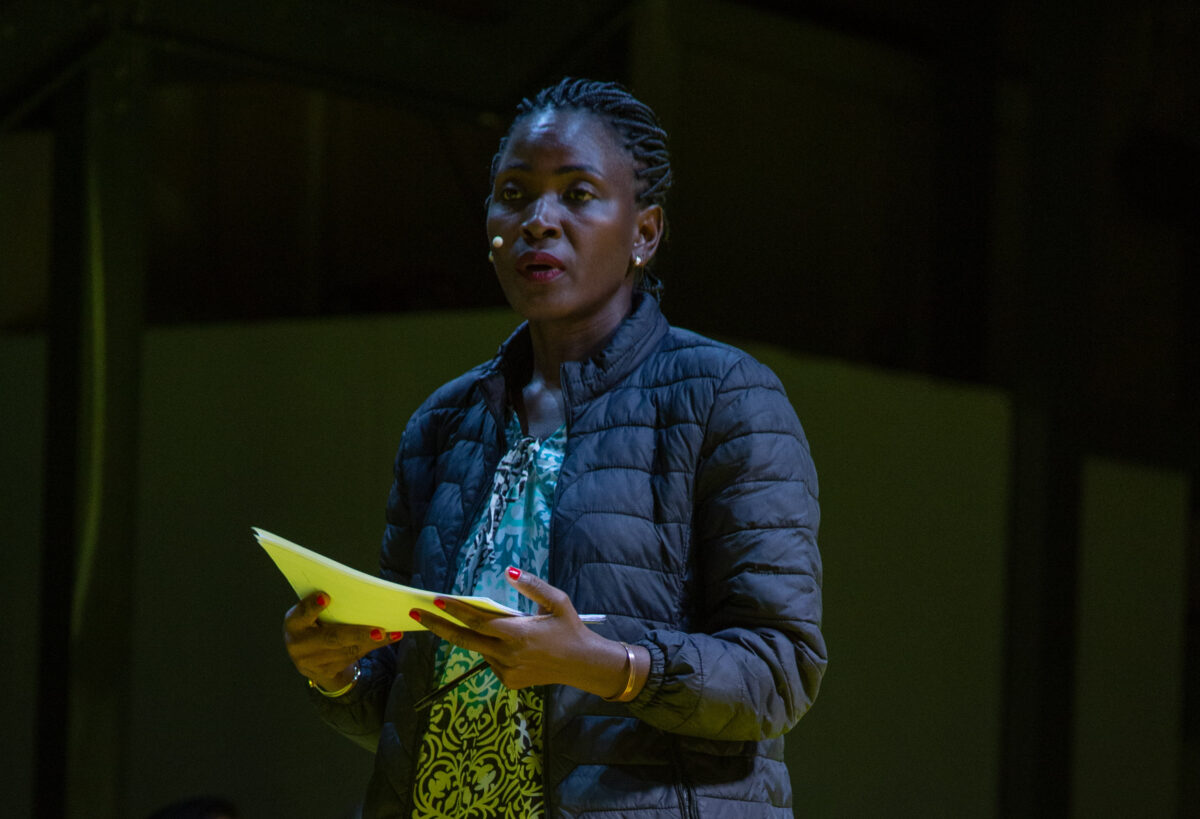
Case III was concerned with ‘forced and indentured labour and its impacts on land-people relations’ (Serpentine 2025: 7). The first Witness, historian Sudipto Mitrao, explored how the indentured labour system was implemented in the wake of the abolition of the slave trade in order to supply a cheap and unfree labour force to colonial plantations. His statement detailed how this large-scale organised labour migration enforced a violent separation of people and land, allowing European tea planters to deforest large swathes of Indian territory whose population had been significantly reduced, while indentured workers were subjected to at times extreme violence at the hands of their employers and plantation overseers. As the second Witness, community organiser Mostafa Henway outlined the position of migrant labour in contemporary economies, highlighting how much of the work that sustains petrocapitalism in places such as the Arab Gulf countries or Canada is carried out by migrant labour, by people who are often forced to move because of conditions in their places of origin that are the direct aftereffects of colonialism. The Advocate, sociologist Hashim bin Rashid, described continuities in exploitation of both labour and natures from slavery and indentureship to contemporary regimes of so-called ‘free movement’ that nevertheless are marked by crackdowns on migrant labour, labour which then as now is regulated through contracts and violence. Pointedly, bin Rashid had to deliver his address via video link, as he was unable to leave his country of residence, the US, for fears of not being able to return due to the continuously escalating anti-migrant measures implemented by the Trump administration.
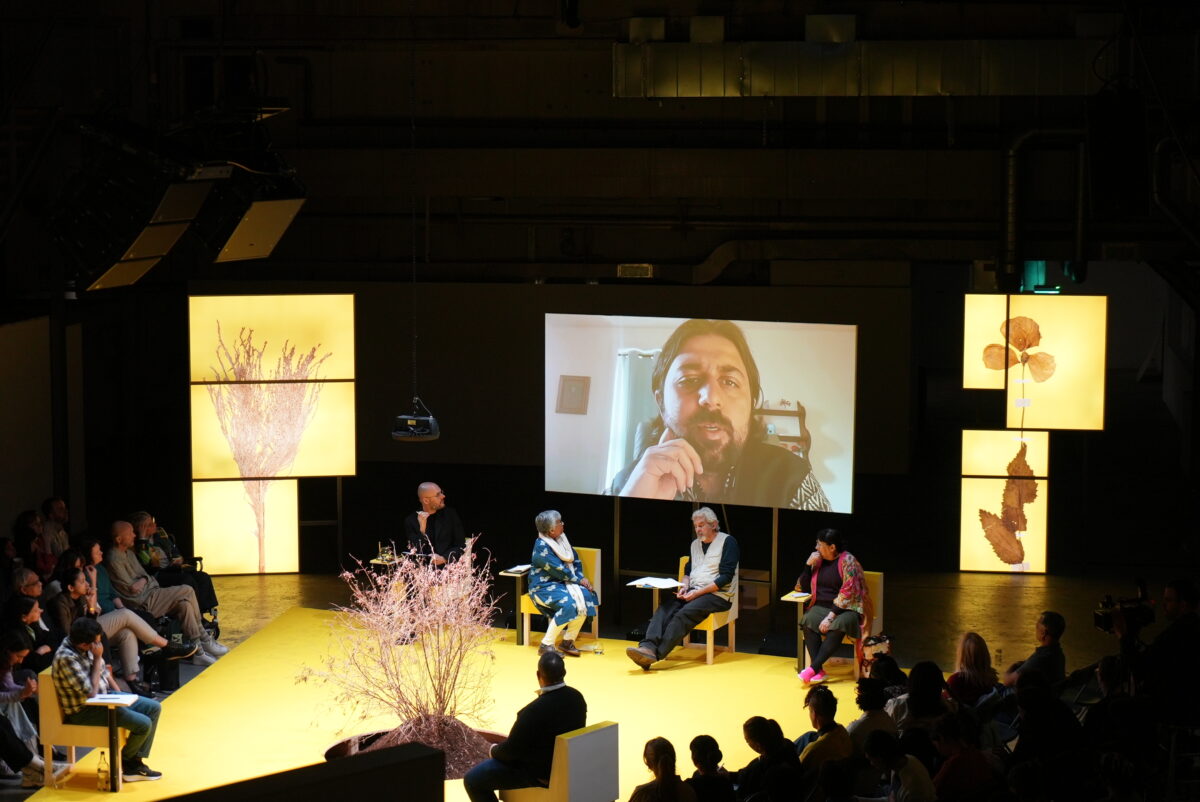
After the court sat for its three sessions, the space at Ambika P3 was inhabited for a further 17 days by the CICC School, an events programme co-curated by D’Souza and members of CREAM’s Ecological Futurisms research group led by Neal White and Roshini Kempadoo, with input from the Serpentine’s curatorial team. The CICC School hosted a series of talks, screenings, discussions, performances, workshops, as well as two off-site walking tours, and facilitated a space in which a diverse group of people including artists, activists, academics and members of various migrant communities could gather, deliberate and share knowledge. The contributions to the CICC School picked up various strands of matter that arose during the court’s proceedings and spun them into critical encounters with themes such as the ongoing war in Sudan, Indigenous struggles in Mexico, planetary health and justice, the colonial erasure and contemporary revitalisation of muslin production in Bengal, the 1943 Bengal famine, indigo, indentured labour, migration policy, traces of the East India Company in London’s urban fabric as well as remnants of colonial histories in the British countryside, more-than-human notions of rights, the intersections between decolonial and ecological discourse, decolonial modes of study and knowledge production, and zine making.
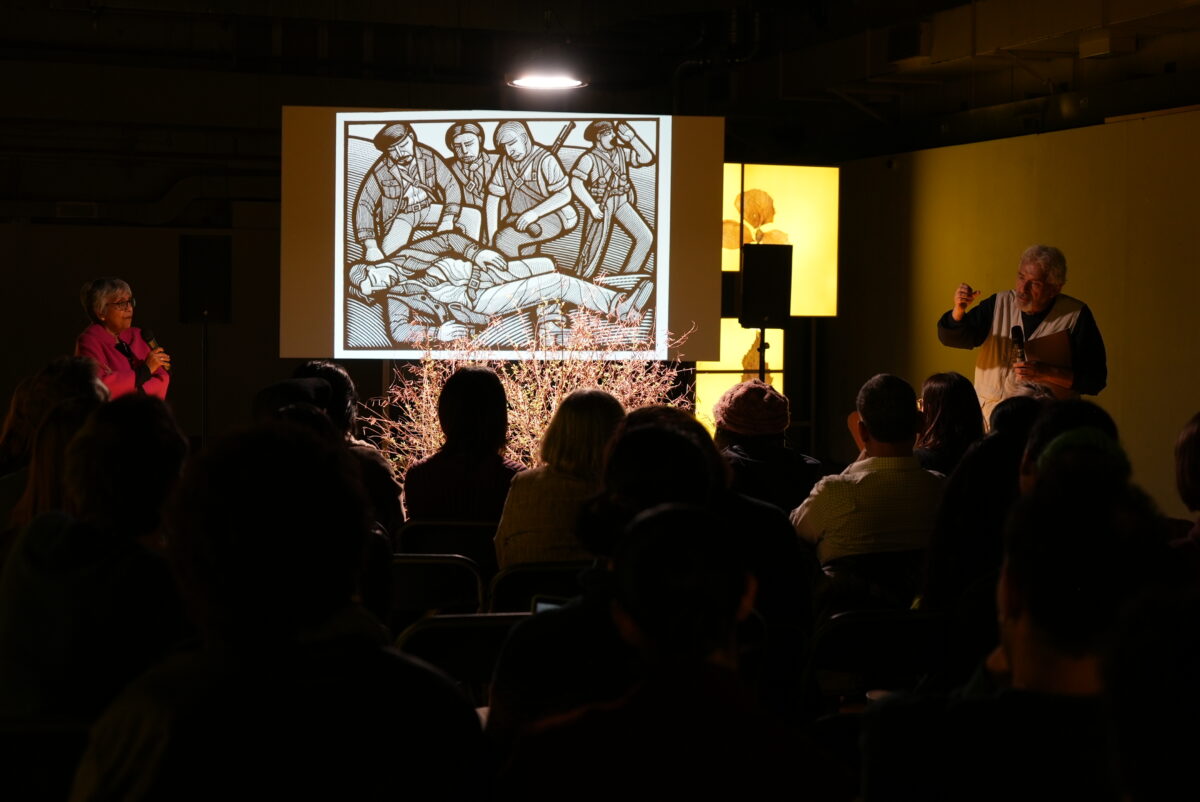
The entire season of events was accompanied by a group of University of Westminster PhD candidates and visiting researchers, the CICC Correspondents, who are in the process of producing a series of responses to the various activities of the CICC and the CICC School. These will be published as a special issue of Hyphen Journal.
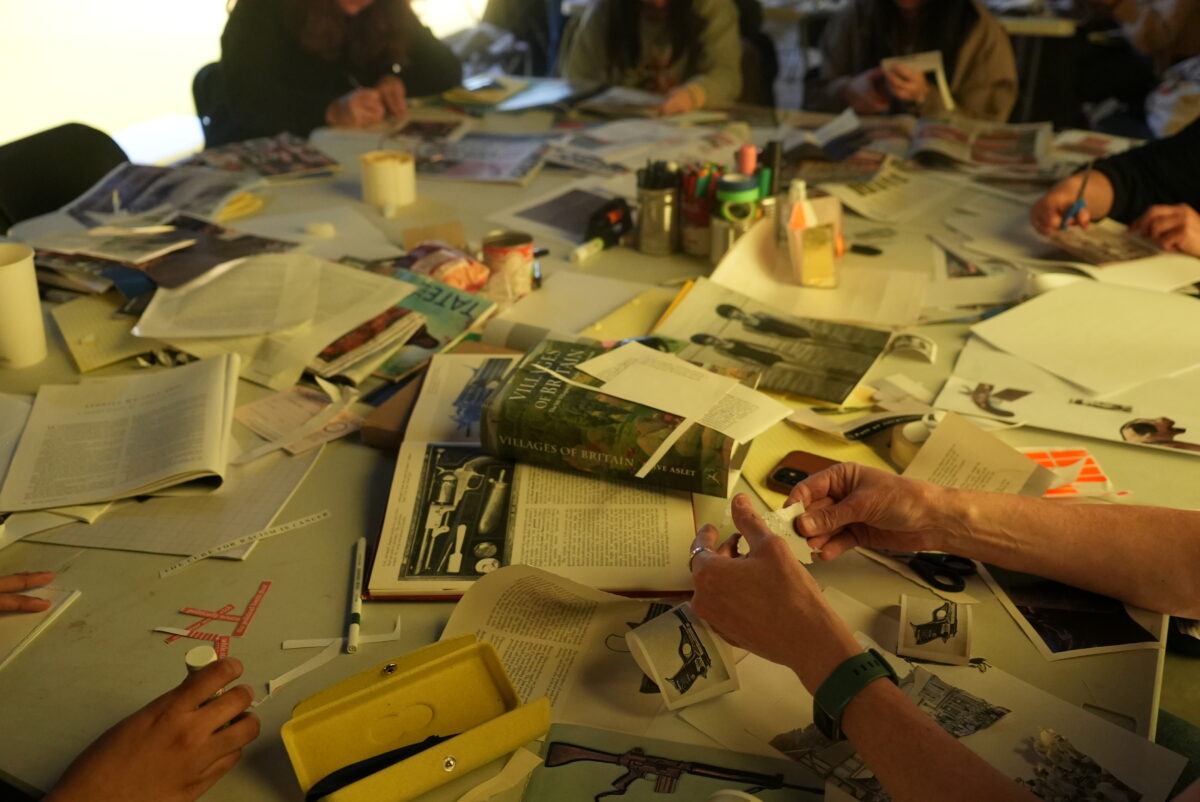
Emerging back out of the cavernous space at Ambika P3, it is worth recalling that the CICC and the CICC School took place in a city in which the traces of the East India Company still loom large, if one only cares to look for them. In much the same way, as the three court proceedings showed, the systems – legal and otherwise – that the East India Company put in place to facilitate its centuries-long exploitation of its colonies are still with us in many ways, some of which as nearly uninterrupted continuities, others in myriad transmutated guises. Clearly, the work of exposing how the East India company operated its vast system of extraction is essential for understanding the conditions and contradictions of the contemporary moment. The work of the CICC, and the EIC iteration supported by Ecological Futurisms continues. Following its intervention at Ambika P3, this is necessary on several levels: for countering historical forgetting of colonial crimes, for understanding how systems of unaccountable power and extraction operate in the present, and for holding a space in which intergenerational, multi-species conceptions of the law can be envisioned and enacted.
Matthias Kispert is a Research Fellow at CREAM. He is a coordinator of Ecological Futurisms, and produced the London iteration of the CICC: EIC on behalf of CREAM.
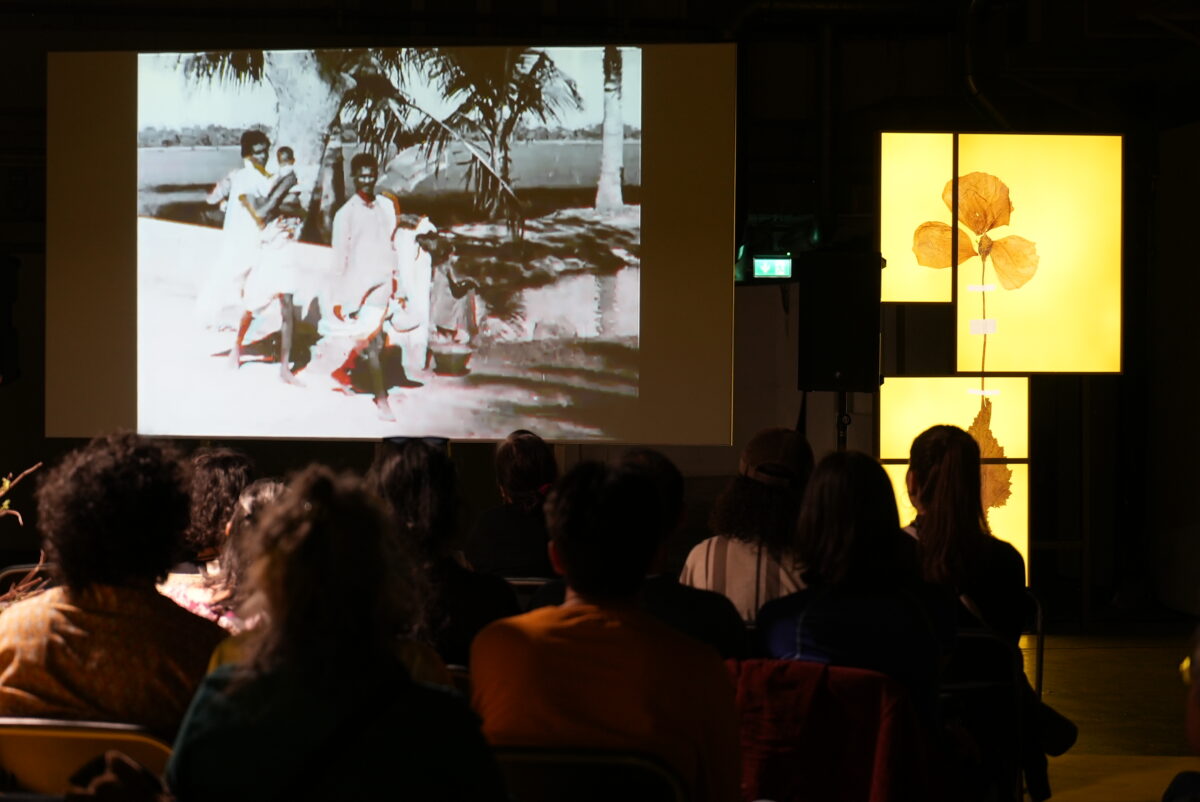
References
D’Souza, Radha (2018), What’s wrong with rights? Social movements, law and liberal imagination, London: Pluto Press.
D’Souza, Radha and Staal, Jonas (2021), The Intergenerational Climate Crimes Act, https://framerframed.nl/en/dossier/statuut-intergenerationale-klimaatmisdaden. Accessed 17 July 2025.
Serpentine (2025), Court for Intergenerational Climate Crimes: The British East India Company on Trial: a project by Radha D’Souza and Jonas Staal, exhibition booklet, London: Serpentine, https://cream.ac.uk/wp-content/uploads/CICC_EIC_on_Trial_booklet_online.pdf. Accessed 21 November 2025.
Urano, Pedro (2025/forthcoming), ‘Interview with Radha D’Souza’, Hyphen Journal, 5.
Full recordings of the three London cases are available here,
The exhibition booklet is available here.